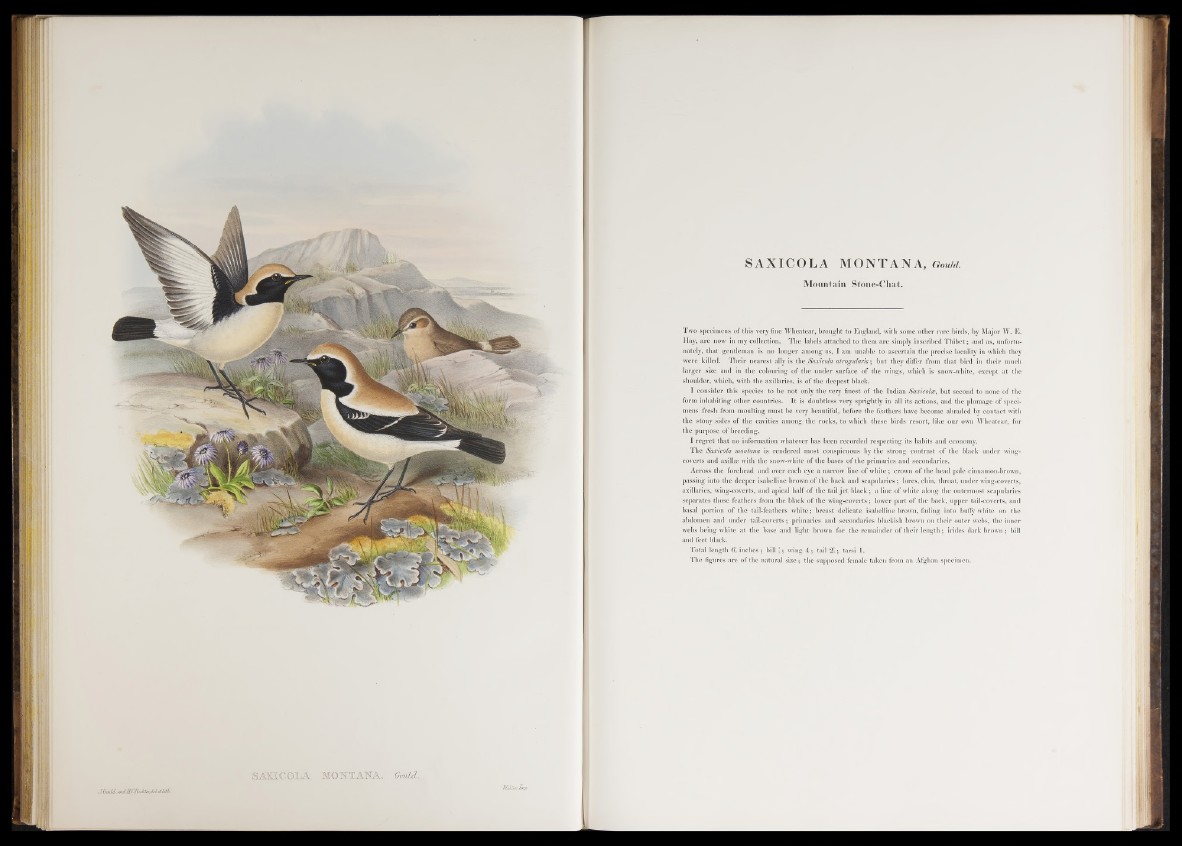
JG eull. andRCliuJiHr.deieC/itít
SAMCOIA MOXIAHA. ' (m a lí.
TffuLCtr.Jírvp.
SAXICOLA MONTANA, Gouid.
Mountain Stone-Chat.
Two specimens of this very fine Wheatear, brought to England, with some other rare birds, by Major W. E.
Hay, are now in my collection. The labels attached to them are simply inscribed T h ib e t; and as, unfortunately,
that gentleman is no longer among us, I am unable to ascertain the precise locality in which they
were killed. Their nearest ally is theSaxicola atrogularis\ but they differ from that bird in their much
larger size and in the colouring of the under surface o f the wings, which f§ snow-white, except at the
shoulder, which, with the axillaries, is o f the deepest black.
I consider this species to be not only the very finest o f the Indian Saxicolce, but second to none o f the
form inhabiting other countries. It is doubtless very sprightly in all its actions, and the plumage of specimens
fresh from moulting must be very beautiful, before the feathers have become abraded by contact with
the stony sides of the cavities among the rocks, to which these birds resort, like our own Wheatear, for
the purpose of breeding.
I regret that no information whatever has been recorded respecting its habits and economy.
The Saxicola montana is rendered most conspicuous by the strong contrast of the black under wing-
coverts and axillae with the snow-white of the bases of the primaries and secondaries.
Across the forehead and over each eye a narrow line of white; crown of the head pale cinnamon-brown,
passing into the deeper isabelline brown of the back and seapularies ; lores, chin, throat, under wing-coverts,
axillaries, wing-coverts, and apical half o f the tail j e t black; a line of white along the outermost seapularies
separates those feathers from the black of the wing-coverts; lower part of the back, upper tail-coverts, and
basal portion of the tail-feathers white; breast delicate isab.elline brown, fading into buffy white on the
abdomen and under tail-coverts; primaries and secondaries blackish brown on their outer webs, the inner
webs being white at the base and light brown for the remainder of their length ; irides dark brown; bill
and feet black.
Total length 61 inches; bill 1; wing 4 ; tail 21; tarsi 1.
The figures are of the natural size; the supposed female taken from an Afghan specimen.